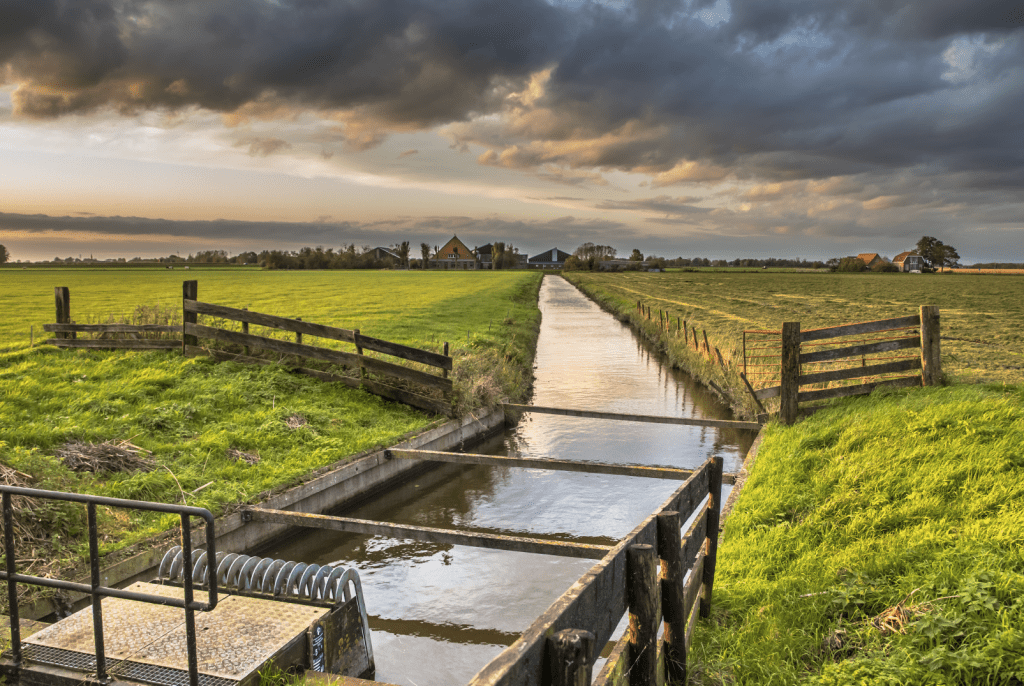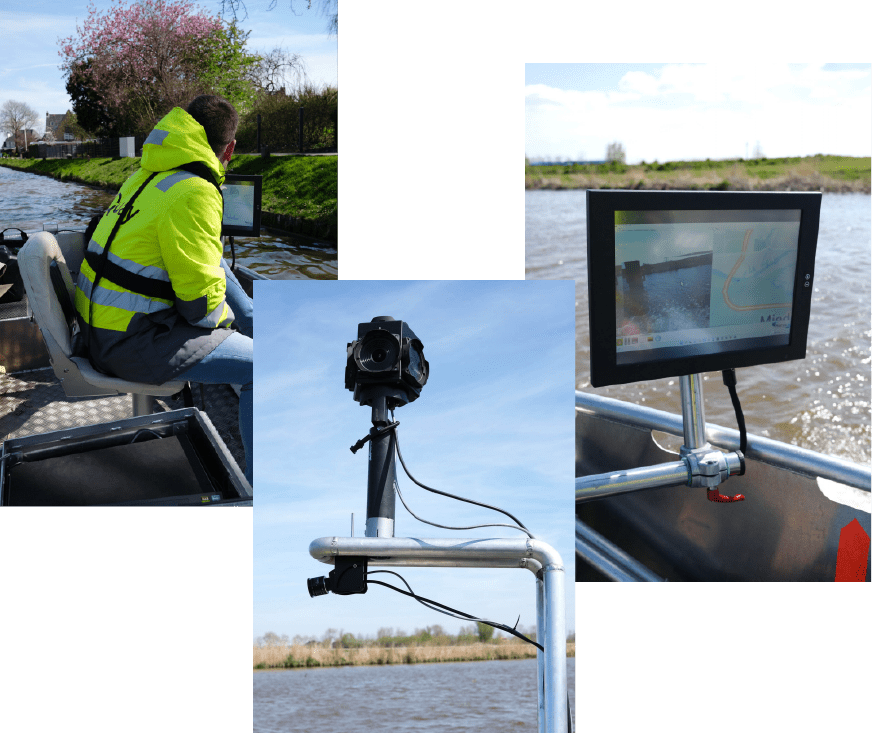Infrastructure
Intelligent inspection of bankside structures
In collaboration with oQuay, GeoAI has built a data-oriented inspection system for waterways, based on modular open source mapping technology in combination with various AI (image) recognition techniques.
Under the name GeoQuay, damage is detected and accurately mapped. Various analyzes provide better insight into the performance, risks, choice of control measures and costs. In addition, the application has the option of linking to various management packages that are frequently used within asset management.

Topics
Waterways
The Netherlands has 6.5 thousand kilometers of waterways. These waterways and canals are used to drain excess water from agricultural and peat areas and are connected to the existing rivers. This has created a large network of waterways. These waterways require a lot of maintenance, the banks are protected against erosion by, for example, wooden or steel sheet pile constructions, stone dumping or nature-friendly banks. These constructions are regularly inspected to prevent dangerous situations at high water.
Inspection
The traditional inspection of banks is a cost-intensive process, carried out by asset managers and inspectors. In many cases, the inventory is carried out with paper maps, pen and notepad and sometimes with a geographic information app where completion lists have to be worked through. These human inspection methods are often subjective, it is a global personal assessment that describes the state of the bank and determines a residual lifespan based on own experience.
- The development of the damage over several years is not clear.
- No comparison is made with the degradation statistics of the material.
- The assessment based on risks can be ambiguous.
Asset management
A wide variety of bank protection types and damage patterns are detected and automatically positioned as lines on the bank geometries. The location serves as a link and can be used for various reports. This gives asset management the opportunity to better balance performance, risks, choice of control measures and costs and to articulate them in a digital maintenance plan. In addition, there are various links with management packages that are often used within asset management.
GeoQuay
Innovative inspection
The bank is captured once with a camera, after which the images are interpreted multiple times by different artificial intelligence models.
The AI models have been trained by various experts in several rounds of evaluation, whereby the outcome of the models has always been tested for veracity by inspectors and managers of bank constructions. As a result, the models behave according to the average of the human observation and thus objectively make a prediction based on the collective idea of damage, for example.
The detection process is fully automatic, which benefits the quality, is verifiable because the detection is drawn onto the image and can be re-trained when the artificial intelligence is not sufficient. By positioning the detection in the geographically correct place, an annual analysis can be carried out to provide insight into the true situation.


Intelligent inspection
The advantages of GeoQuay
With GeoQuay you save unnecessary costs.
AI models have been reviewed by inspectors and bankside structure managers, leading to an agreement on the extent of damage the models can detect. This allows the model to make an unambiguous assessment of damage in different scenarios.
GeoQuay makes a link to the actual geographical location of the bank structures. As a result, multi-year inspections can easily be made transparent and the degeneration of an object becomes known
Performance, risks, choice of control measures and costs can be made more transparent, because there are various links with management packages that are used within asset management.

